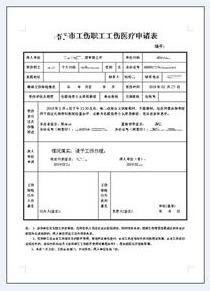python列表和字典(Python中字典与集合的使用指南)
全文共5092字,预计学习时长10分钟
本文将介绍Python的内置集合模块,用于支持集合和键值对等数学概念。
什么是集合?
集合是一组用于储存唯一值的序列。
初始化
可使用花括号{}定义集合。
>>> numSet = {1, 2, 3, 4, 5}
>>> print(numSet)
{1, 2, 3, 4, 5}
若在初始化中键入重复值,则只保留一个元素。
>>> numSet = {1, 2, 2, 3, 3, 3, 4, 4, 4, 4, 5}
>>> print(numSet)
{1, 2, 3, 4, 5}
也可使用内置的 set函数进行空集初始化。
>>> emptySet = set()
>>> print(emptySet)
set()
注意:集合元素是不可更改的,在集合中加入可变对象会报错。
>>> tuple1 = (1, 2, 3)
>>> tuple2 = (4, 5, 6)
>>> tupleSet = {tuple1, tuple2} # no error as tuples are immutable
>>> print(tupleSet)
{(4, 5, 6), (1, 2, 3)}
>>> list1 = [1, 2, 3]
>>> list2 = [4, 5, 6]
>>> listSet = {list1, list2} #will raise error as lists are mutable
Traceback (most recent call last):
File "<stdin>", line 1, in <module>
TypeError: unhashable type: 'list'
加入元素
使用内置 add函数向集合中加入元素。
>>> numSet = {1, 2, 3, 4, 5}
>>> numSet.add(6)
>>> print(numSet)
{1, 2, 3, 4, 5, 6}
注意:在集合中加入重复元素是无效的,此情况下也不会报错。
>>> numSet = {1, 2, 3, 4, 5}
>>> numSet.add(5)
>>> print(numSet)
{1, 2, 3, 4, 5}
删除元素
使用内置remove函数删除集合中元素。
>>> numSet = {1, 2, 3, 4, 5}
>>> numSet.remove(5)
>>> print(numSet)
{1, 2, 3, 4}
注意:删除集合中不存在的元素不会报错。
>>> numSet = {1, 2, 3, 4, 5}
>>> numSet.remove(99)
Traceback (most recent call last):
File "<stdin>", line 1, in <module>
KeyError: 99
集合长度
使用内置len函数查找集合长度。
>>> numSet = {1, 2, 3, 4, 5}
>>> len(numSet)
5
查找
使用in运算符查找集合中元素。
>>> numSet = {1, 2, 3, 4, 5}
>>> 2 in numSet
True
>>> 99 in numSet
False
接下来介绍如何执行集合操作。
交集
使用 &运算符寻找两个集合的交集。
>>> setA = {1, 2, 3, 4, 5}
>>> setB = {3, 4, 5, 6, 7}
>>> intersection = setA & setB
>>> print(intersection)
{3, 4, 5}
并集
使用|运算符将两个集合合并。
>>> setA = {1, 2, 3, 4, 5}
>>> setB = {3, 4, 5, 6, 7}
>>> union = setA | setB
>>> print(union)
{1, 2, 3, 4, 5, 6, 7}
补集
补集返回值为仅在第一个集合中出现的值。
使用-运算符寻找补集。
>>> setA = {1, 2, 3, 4, 5}
>>> setB = {3, 4, 5, 6, 7}
>>> difference = setA - setB
>>> print(difference)
{1, 2}
>>> reverseDifference = setB - setA
>>> print(reverseDifference)
{6, 7}
集合对称差
对称差返回值是由只属于两个集合中任一集合,而非全部集合的元素组成的集合。
使用 ^ 运算符寻找两个集合的对称差。
>>> setA = {1, 2, 3, 4, 5}
>>> setB = {3, 4, 5, 6, 7}
>>> symmDiff = setA ^ setB
>>> print(symmDiff)
{1, 2, 6, 7}
检查超集
若集合A含有集合B中所有元素,则集合A为集合B的超集。
使用>=运算符检验左侧集合是否为右侧集合的超集。
>>> bigSet = {1, 2, 3, 4, 5}
>>> smallSet = {3, 4}
>>> isSuperSet = bigSet >= smallSet
>>> print(isSuperSet)
True
使用<= 运算符检验右侧集合是否为左侧集合的超集。
>>> bigSet = {1, 2, 3, 4, 5}
>>> smallSet = {3, 4}
>>> isSuperSet = smallSet <= bigSet
>>> print(isSuperSet)
True
如何使用字典?
在Python中,字典用于储存键值对。
初始化
同样可以使用花括号{}初始化字典,并使用key :value 语法声明键值对。
>>> nameToNumber = {"John" : 1, "Harry" : 2, "Jacob" : 3}
>>> print(nameToNumber)
{'John': 1, 'Harry': 2, 'Jacob': 3}
也可使用内置dict函数初始化空字典。
>>> emptyDict = dict()
>>> print(emptyDict)
{}
还可直接使用空花括号{}初始化空字典。
>>> emptyDict = {}
>>> print(emptyDict)
{}
注意:不可改变字典中的键。尝试使用可变键创建字典会报错。
>>> tupleA = (1, 2, 3) # tuples are immutable
>>> stringA = "I love Python!" # strings are immutable
>>> floatA = 3.14 # float values are immutable
>>> dictA = {tupleA : True, stringA : False, floatA : True} # no error as all keys are immutable
>>> print(dictA)
{(1, 2, 3): True, 'I love Python!': False, 3.14: True}
>>> listB = [1, 2, 3] #list is mutable
>>> dictB = {listB : True} # raises an error as lists are mutable
Traceback (most recent call last):
File "<stdin>", line 1, in <module>
TypeError: unhashable type: 'list'
获取数据
使用方括号([])从字典中获取键值。
>>> nameToNumber = {"John" : 1, "Harry" : 2, "Jacob" : 3}
>>> JohnsNumber = nameToNumber["John"]
>>> print(JohnsNumber)
1
注意:寻找不存在的键会报错。
>>> nameToNumber = {"John" : 1, "Harry" : 2, "Jacob" : 3}
>>> nameToNumber["Sam"]
Traceback (most recent call last):
File "<stdin>", line 1, in <module>
KeyError: 'Sam'
为避免报错,可以使用内置 get函数。使用该函数寻找不存在的键返回值为None,但不会报错。
>>> nameToNumber = {"John" : 1, "Harry" : 2, "Jacob" : 3}
>>> johnsNumber = nameToNumber.get("John")
>>> print(johnsNumber)
1
>>> samsNumber = nameToNumber.get("Sam"
>>> print(samsNumber)
None
若字典中缺少键,则可以使用get 函数返回默认值。将所需的默认值作为第二个参数传递给get 函数。
>>> nameToNumber = {"John" : 1, "Harry" : 2, "Jacob" : 3}
>>> johnsNumber = nameToNumber.get("John", 99)
>>> print(johnsNumber)
1
>>> samsNumber = nameToNumber.get("Sam", 99)
>>> print(samsNumber)
99
修改数据
使用内置setdefault 函数将数据插入字典。
只有在字典中不存在该键时,setdefault才会在字典中创建新键值对。若该键存在,也不会被覆盖。
>>> nameToNumber = {"John" : 1, "Harry" : 2, "Jacob" : 3}
>>> nameToNumber.setdefault("Sam", 4)
4
>>> print(nameToNumber)
{'John': 1, 'Harry': 2, 'Jacob': 3, 'Sam': 4}
>>> nameToNumber.setdefault("Sam", 99) # no changes as the key already exists
4
>>> print(nameToNumber)
{'John': 1, 'Harry': 2, 'Jacob': 3, 'Sam': 4}
使用内置update函数修改字典中现存值。
>>> nameToNumber = {"John" : 1, "Harry" : 2, "Jacob" : 3}
>>> nameToNumber.update({"Sam" : 4}) # creates new entry
>>> print(nameToNumber)
{'John': 1, 'Harry': 2, 'Jacob': 3, 'Sam': 4}
>>> nameToNumber.update({"Sam" : 99}) # updates existing entry
>>> print(nameToNumber)
{'John': 1, 'Harry': 2, 'Jacob': 3, 'Sam': 99}
也可使用方括号修改现存值。
>>> nameToNumber = {"John" : 1, "Harry" : 2, "Jacob" : 3}
>>> nameToNumber["Sam"] = 4 # creates new entry
>>> print(nameToNumber)
{'John': 1, 'Harry': 2, 'Jacob': 3, 'Sam': 4}
>>> nameToNumber["Sam"] = 99 # updates existing entry
>>> print(nameToNumber)
{'John': 1, 'Harry': 2, 'Jacob': 3, 'Sam': 99}
删除数据
使用 del命令删除字典中的键。
>>> nameToNumber = {"John" : 1, "Harry" : 2, "Jacob" : 3}
>>> del nameToNumber["John"]
>>> print(nameToNumber)
{'Harry': 2, 'Jacob': 3}
注意:删除不存在的键会报错。
>>> nameToNumber = {"John" : 1, "Harry" : 2, "Jacob" : 3}
>>> del nameToNumber["Sam"]
Traceback (most recent call last):
File "<stdin>", line 1, in <module>
KeyError: 'Sam'
迭代
使用内置keys功能在字典中的键上进行迭代。
>>> nameToNumber = {"John" : 1, "Harry" : 2, "Jacob" : 3}
>>> names = list(nameToNumber.keys()) # using list() to store in a list
>>> print(names)
['John', 'Harry', 'Jacob']
可以使用内置的values函数迭代字典中的值。
>>> nameToNumber = {"John" : 1, "Harry" : 2, "Jacob" : 3}
>>> values = list(nameToNumber.values())
>>> print(values)
[1, 2, 3]
留言 点赞 关注
我们一起分享AI学习与发展的干货
如需转载,请后台留言,遵守转载规范
,
免责声明:本文仅代表文章作者的个人观点,与本站无关。其原创性、真实性以及文中陈述文字和内容未经本站证实,对本文以及其中全部或者部分内容文字的真实性、完整性和原创性本站不作任何保证或承诺,请读者仅作参考,并自行核实相关内容。文章投诉邮箱:anhduc.ph@yahoo.com











